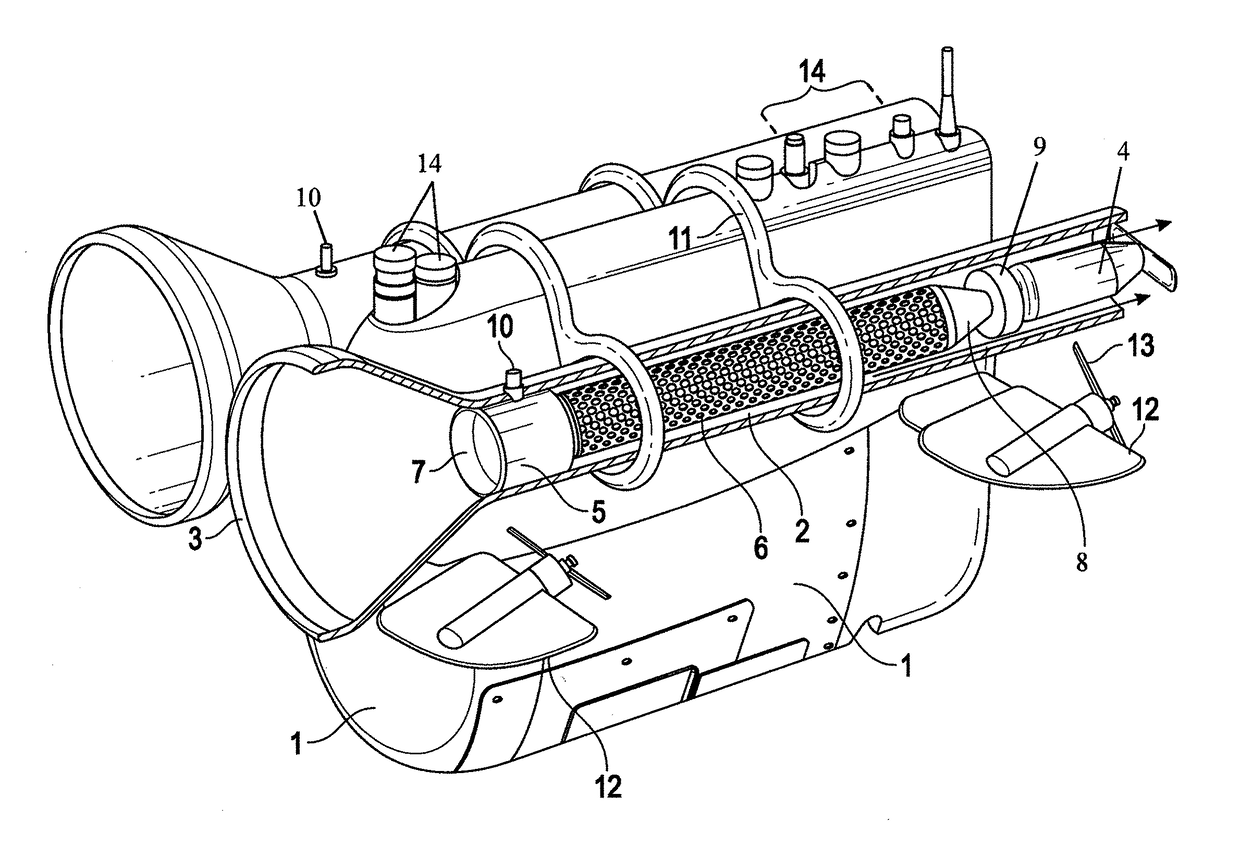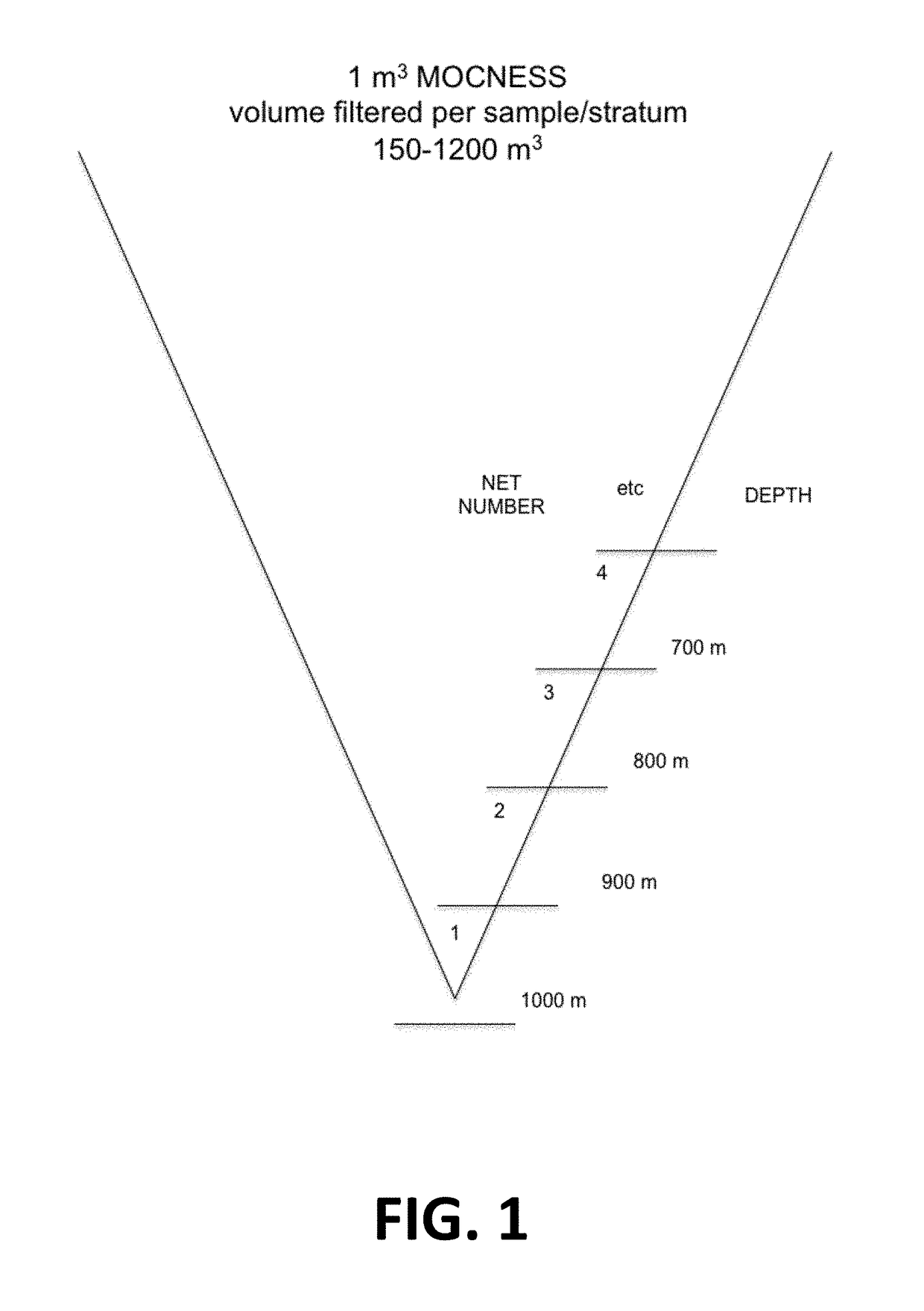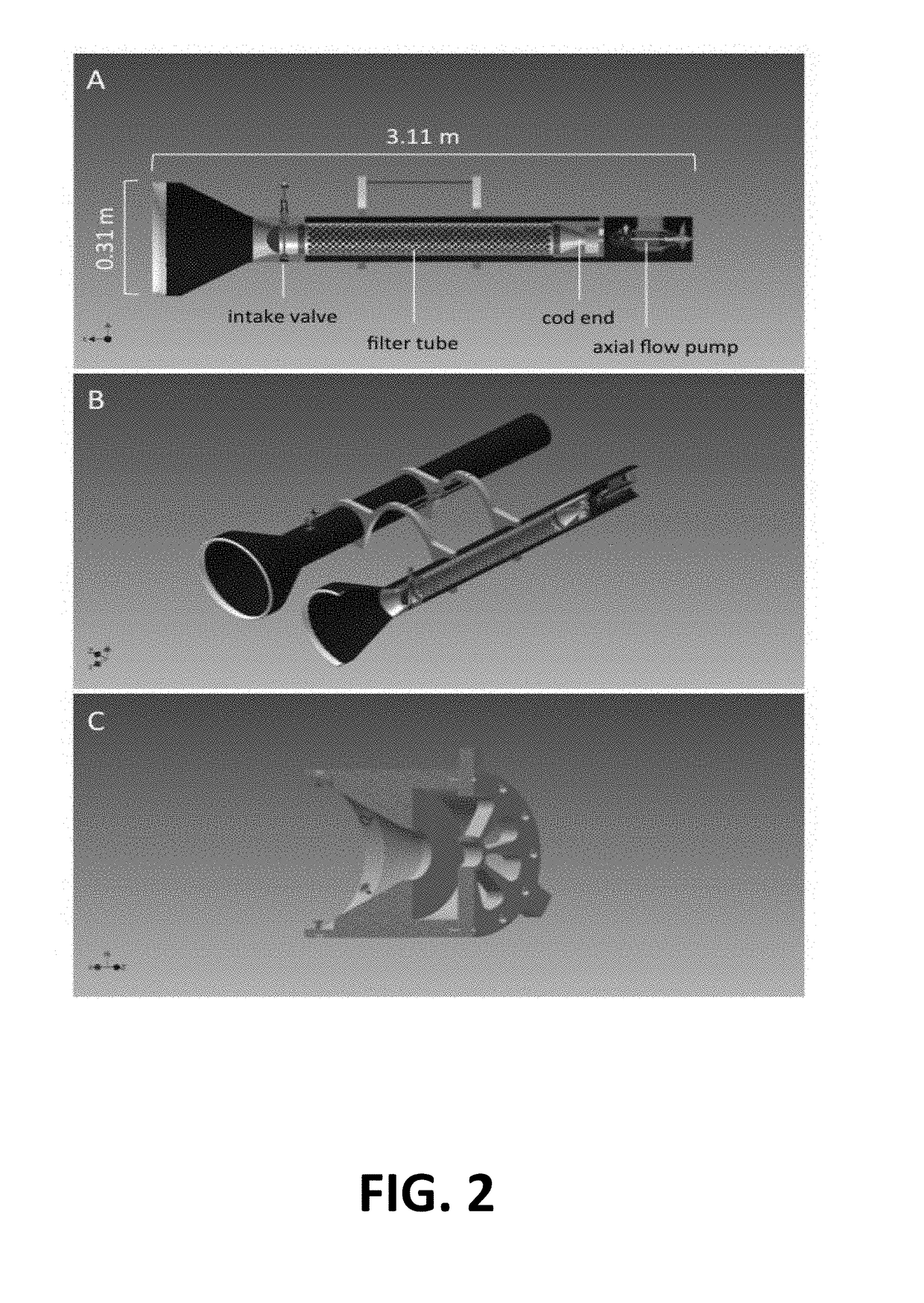Aquatic Sampler and Collection Apparatus
a sampling apparatus and sampler technology, applied in the field of aquatic sampling apparatus, can solve the problems of insufficient subsea sampling equipment, low sampling efficiency, and inability to accurately measure the size and productivity of plankton,
- Summary
- Abstract
- Description
- Claims
- Application Information
AI Technical Summary
Benefits of technology
Problems solved by technology
Method used
Image
Examples
example 1
[0054]The present invention provides the capacity for exploring the genetic, oceanographic, and larval connections among seep ecosystems and other underwater environments in addition to many other marine applications. The following example is put forth so as to provide those of ordinary skill in the art with a complete disclosure and description of the aquatic sampling and collection apparatus, and is not intended to limit the scope of what the inventors regard as their invention. Rather, it is meant solely to demonstrate a working embodiment of the invention.
[0055]A SyPRID embodiment of the present invention was tested in July of 2015 to collect plankton near natural methane seeps located in the ocean. Natural methane seeps play an important but poorly understood role in the ocean ecosystem. The organisms that depend on methane from the seeps play a substantial role not only in the marine food web but also in altering the quantity of methane released to the ocean surface and, poten...
example 2
[0064]As previously discussed, the instant invention may be used as a system instrumental in the remediation of non-bio particles including microplastics and foreign particles in bodies of water. Each year millions of metric tons of plastic are used around the globe, and a substantial portion of plastic debris enters the ocean and fresh waters and is carried by water currents, spreading throughout the water column where the debris interacts with the present ecosystem. Classes of plastics found commonly in the aquatic environment include, but are not limited to, low-density polyethylene, high-density polyethylene, polytetrafluoroethylene, polyethylene terephthalate, polypropylene, polysterene, foamed polysterene, nylon, thermoplastic polyester, poly(vinyl chloride), and cellulose acetate. In addition to animal entanglement in plastic materials, plastics in the size range of 1 mm to 5 mm are being injected by aquatic animals which is then passed on in human consumption. Plastics have ...
PUM
| Property | Measurement | Unit |
|---|---|---|
| depth | aaaaa | aaaaa |
| depth | aaaaa | aaaaa |
| depth | aaaaa | aaaaa |
Abstract
Description
Claims
Application Information
 Login to View More
Login to View More - R&D
- Intellectual Property
- Life Sciences
- Materials
- Tech Scout
- Unparalleled Data Quality
- Higher Quality Content
- 60% Fewer Hallucinations
Browse by: Latest US Patents, China's latest patents, Technical Efficacy Thesaurus, Application Domain, Technology Topic, Popular Technical Reports.
© 2025 PatSnap. All rights reserved.Legal|Privacy policy|Modern Slavery Act Transparency Statement|Sitemap|About US| Contact US: help@patsnap.com



